As I trotted horseback with purpose, cutting through the sweltering still air, I had no idea that treachery had been afoot in the Hat Creek Country.
It was hot for the 15th of May, particularly in this deep cleft in the rocks that we call Pig Creek. I nudged my stalwart mare, Missy, up the elk trail that cut through the spiny greasewood out of the dry wash of the canyon bottom. We had been trotting across the lower volcanic hills for several miles, and we proceeded to high step through the andesitic gravels along the rimrock. An occasional rattlesnake buzzed in the brush alongside us, but we paid them no heed. Missy was a mare on a mission, and distractions were ignored.
She was a Morgan horse after all, typical of the breed, she would die trying no matter what I asked her to do. We had left the Little Hat Ranch’s corrals just shy of an hour before and had put miles of trail dust behind us that hung in the breezeless early summer heat. We had to move fast because I knew that some of the cows would grab their calves and immediately make for the lush pastures of Little Hat 10 miles up the trail, opting for the beaver-irrigated meadows of the remote ranch over the dry grasses of the open range.
Missy and my destination was the Pig Creek drift fence, and closing the gate to bar cattle access to the trail that took them to Little Hat.
******EDITED TO HERE*************
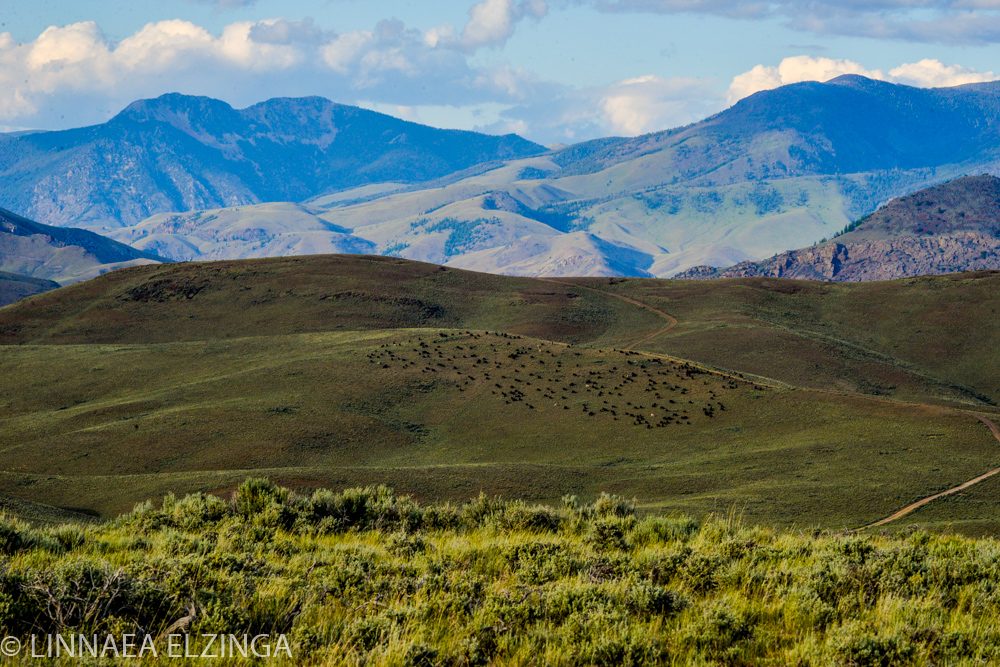
.
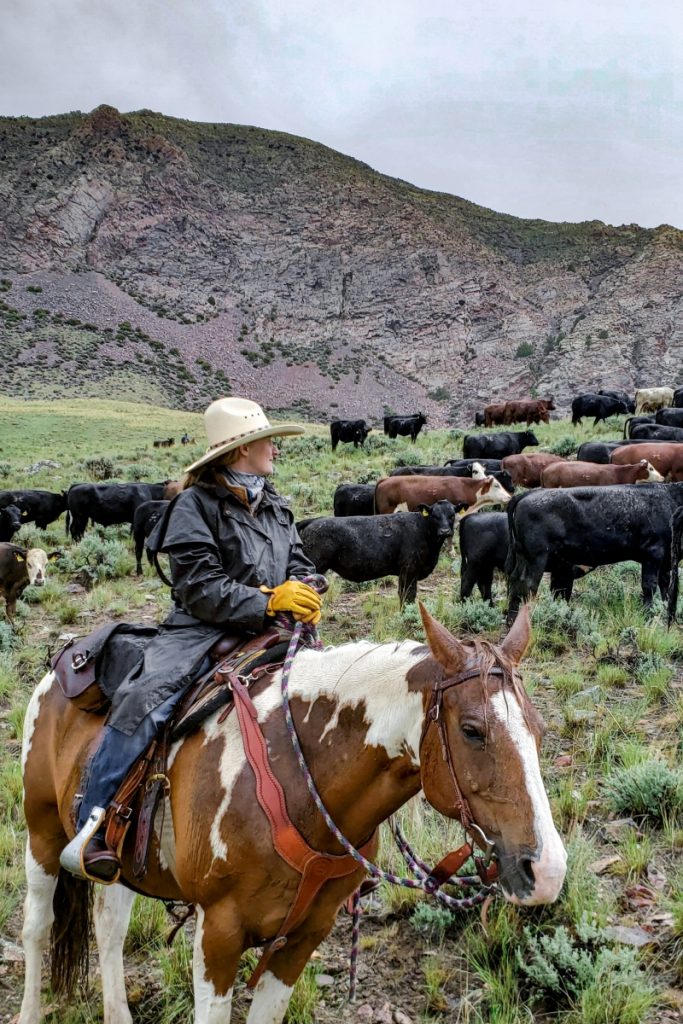
They are getting used to—hardened—to those long days in the saddle, and all are becoming quite proficient at handling their equine charges. They are developing expertise in horse care as had people for thousands of years before them; there’s no technological solution for keeping friction from cutting open a horse’s back and belly; there is only the literal application of tender loving care through the practiced placement of saddle, blankets and cinches.
These young adults have embraced that their equine charges are partners, and necessary to complete their tasks. They all watched as Ginger, the buckskin mare had an arthritis flare up, and Nate from Ohio was cast afoot for the rest of his stint. To his credit, Nate kept up with the crew and his duties as a herdsman but was exhausted after running on foot alongside 350 head of yearling cattle in top physical condition.
He was happy to be horseback again when we transitioned Ginger off the horse crew to recuperate and brought another two horses up to cow camp.
We always keep 8 horses in camp at any one time. That way, each rider has available a fresh horse for their next day’s journey. The cattle will only walk at most 10 miles each day. But for every 1 mile a steer journeys, a horse will often have to cover two miles to herd them. It’s because when there are 350 head scattered over a mountainside serrated by ridges and ravines, herders are continuously correcting positions of individuals to maintain the direction and flow of the herd and our intended grazing journey for the day.
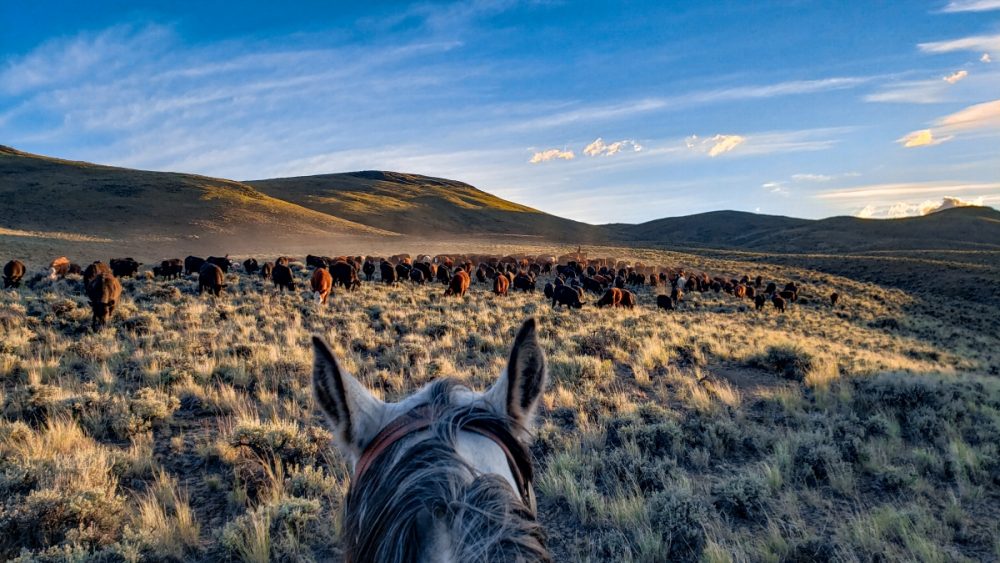
There are always distractions for the cattle that make them forget their allegiance to the herd. Today, it was a coyote. The tawny canine would stay just ahead of the herd leaders, taunting them to follow. And they would. The coyote became magnet for the curious, and pulled the herd across the hills, stretching the entire bunch over a quarter mile.
I finally had to intervene and galloped up to him on my mare, Ruby, to run him off. He hopped away, kangaroo-like, as unthreatened coyotes often do. He came back in a minute for more of the game—and when I got up there to the front of the herd and stood my ground, he quit us. Game over.
As I stood on the ridge and watched him dart among the unending sage into the next canyon, I rubbed the neck of the mare, Ruby. She had been doing well today. Just the day before, she started bucking in obstinacy to my asking her to move out away from the horse herd. Each day on her back brings a little more responsiveness and mutual respect. Daughter Abby has asked me to keep rides on Ruby this summer. Ruby is her mare, and Abby hasn’t been riding because of my two adorable granddaughters, a two-year-old and a crawler. In a few years, they can ride too.
The problem with Ruby’s mind, I think, is that she has the same mentality that some high school cheerleaders have. You know who I’m talking about. Blonde, beautiful, narcissistic. And people serve them. They give them anything they ask for.
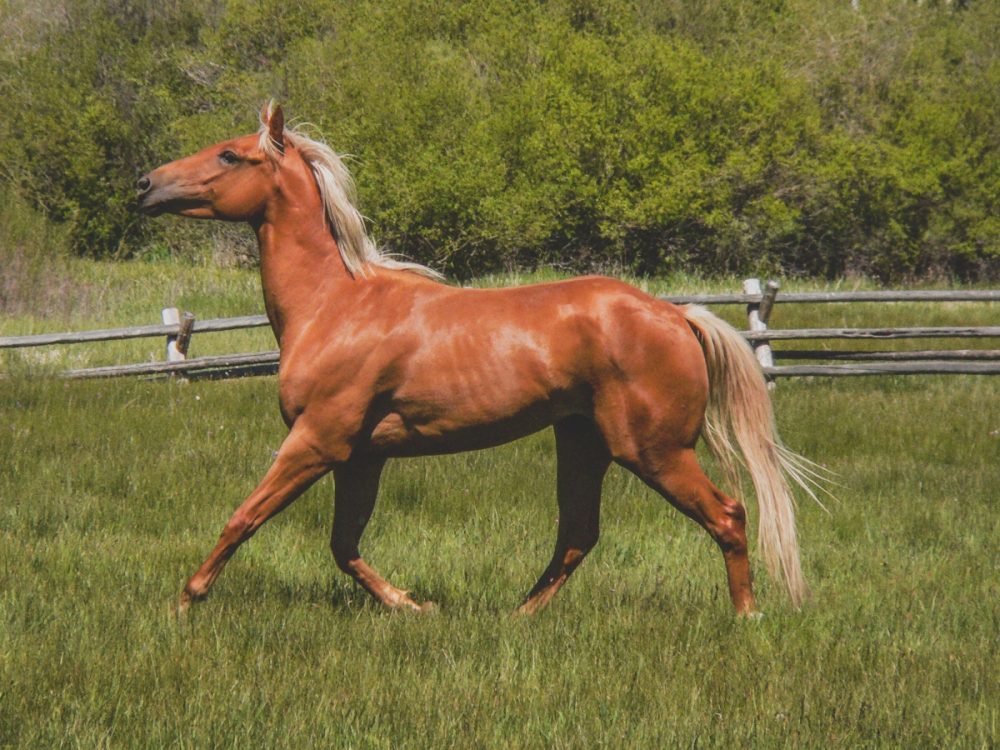
And so they get used to it, some, never quite getting over it. Ruby has the same problem. She is a red palomino with a striking blonde mane. She’s beautiful, and she knows it. I remember the day the girls and I responded to a Craigslist ad and bought her as a filly from a young woman in the Bitteroot Valley of Montana.
We pulled up to her suburban Hamilton, Montana ranch-style house. It was a new house, and the landscaping was still filling the void in the fresh building zone. We knocked on the door, and a beautiful, well-coiffed, blonde-haired young woman opened the door, and welcomed us in (she could have easily been a former cheerleader—I was picturing it). She led us through the immaculate house to the backyard, to where she said her filly was. As we stepped out into the backyard, Melanie, Abby and I stood agape for a few seconds.
The little filly that came happily trotting up looked just like her owner.
They obviously loved each other; soulmates they were. The filly sniffed the young woman’s hands and pockets, looking for the treat that usually defined their relationship. And she received one.
So as we loaded the young, beautiful filly into our stock trailer, there were tears shed. Ruby had really no idea how different her life would be. She would have to learn about the respect of personal space and boundaries, especially from the 20 other Alderspring Ranch horses who would establish it—no holds barred after a few days of nose sniffing over the fenceline.
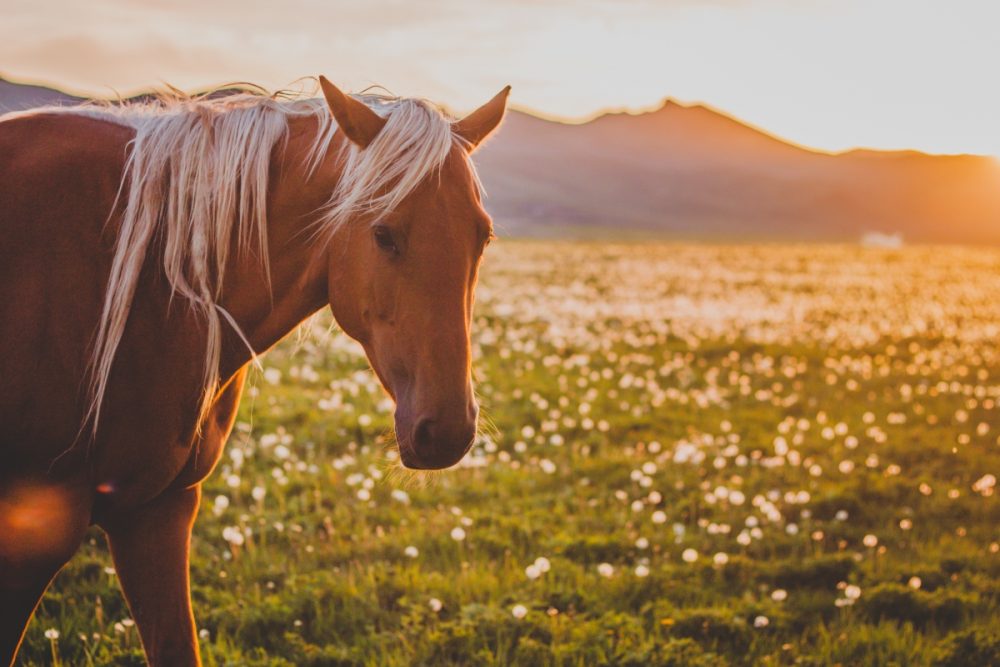
She still has a few such issues. I’ll ask her to run up a steep hill after some recalcitrant steers, and it is as if she’ll say: “but it is such a steep hill. Can’t we go around?”
Or if the brush is heavy, as it was this morning. Instead of diving in there as would most of our horses, she recoils in distaste of what I ask her to do; “but that may scratch me. Can’t we just leave those cattle in there?”
The sage was over 10 feet tall, and would easily sweep you off horseback if you were not paying attention. The cattle love it in there, because the understory is thick with verdant grass, and abundant shade. But most of the herd was still on the move, and we had to get them out. It took almost an hour, but we got it done, and all cattle were accounted for.
Later, as we took our afternoon break in cow camp and recalled the heavy and unyielding brush, Rebecca reflected on her bout with the big sage: “I was sure glad I had my chinks for that. My pants would have been shredded without them.”
It was perfect timing, because she had just put her chinks on that morning, freshly handcrafted by Ethan in his leather shop. They are like chaps, the long leg coverings for life on horseback on the range. Nearly all of the crew wears them. They save jeans, but also save body heat, especially on rainy days. With a canvas oilcloth slicker and chinks, you are weather impervious, despite being out in the wind, rain and snow for days at a time.
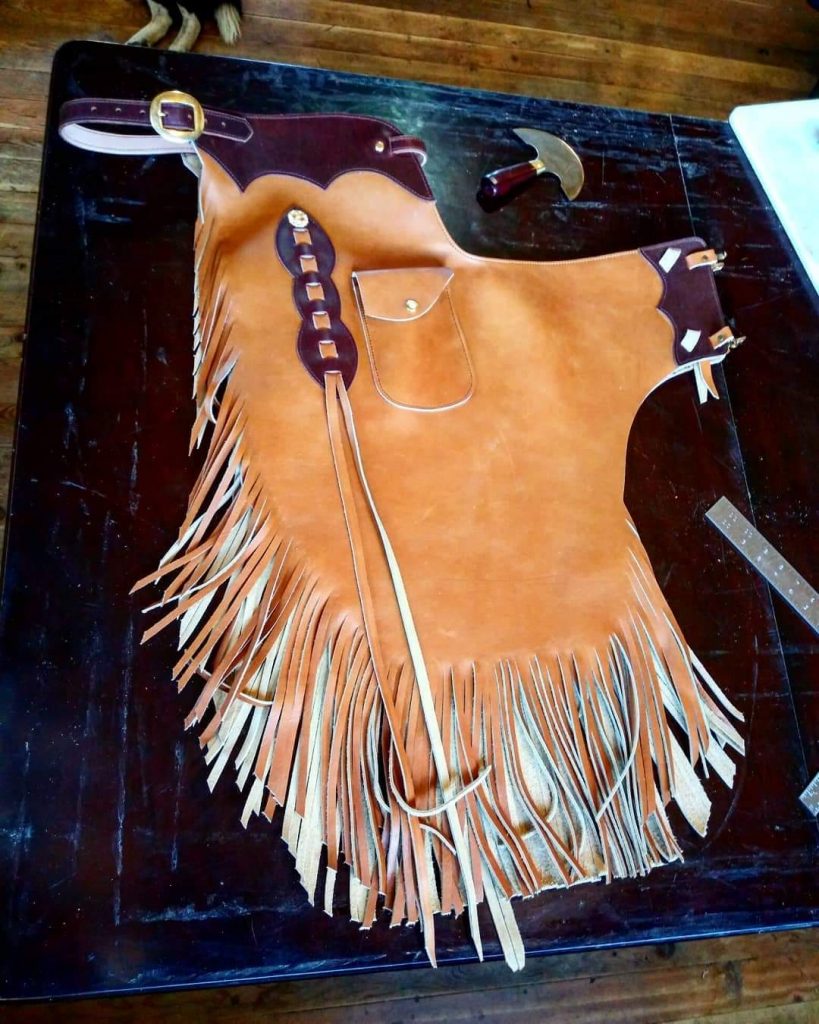
As I watched the crew gain in experience, I was happy to see that they were really getting the stockmanship part; instead of simply pushing cows or driving them, they were starting to herd by feel—by the subtle art of reading the language of cow and applying light pressure specifically where needed to ask the cattle to do what you wanted them to do. Nearly every other cow in this industrial agriculture and cattle-as-commodity world does not have that privilege. Bigger, better and faster has no allowance for cow as a partner.
And the cattle respond to our method of handling. Their flight zones decrease, now, by the day, and we approach them within tens of feet instead of by hundreds. We live and work with them each day, and they know us, and we them.
Later that day popping the big brush, we bring the herd down, back to water and camp at the onset of dusk. A plume of volcanic dust wisps into the air over the herd who are nimbly picking their way over canyon, rock and ridge for their familiar night ground and the bubble of spring water in the tanks. A low sun, balancing on the ridges of the peaks bathes the entire scene in a rosaceous alpenglow light. I pull up my mare for a moment as a take it all in.
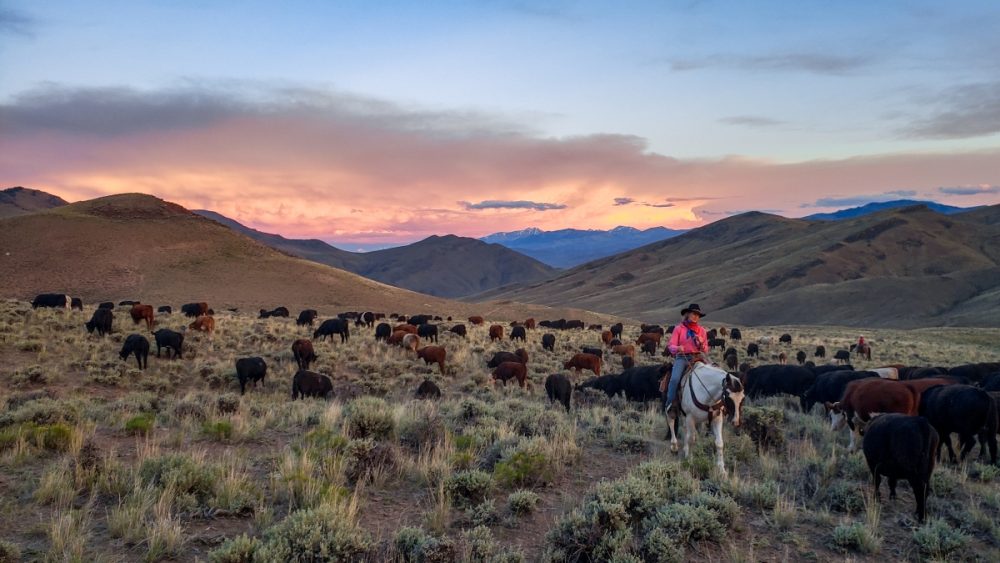
The air is filled with soft and peaceful sounds. The nighthawks are out, and their peenting and throaty mating vibe echoes through the night air. On the next ridge, voice rising and falling with the cadence of the nighttime breezes, Cowboy Sam is singing an African American spiritual in quiet baritone with perfect pitch as he works the drag, or rear of the herd, keeping them directed for camp. Rebecca gives an occasional yip from her voice as she moves them quietly along on the left flank below me. Colton just talks to them with a reassuring “Come on, cows“ as he works the right front.
Not a sound comes from the beeves themselves. They are the picture of contentment as the walk with never an utterance, for a contented cow has no words, but one.
And that is the sound of them happily tearing another bite of summer sunshine from the earth. And when they can all do that to their satisfaction, all is right with the world.
Happy Trails
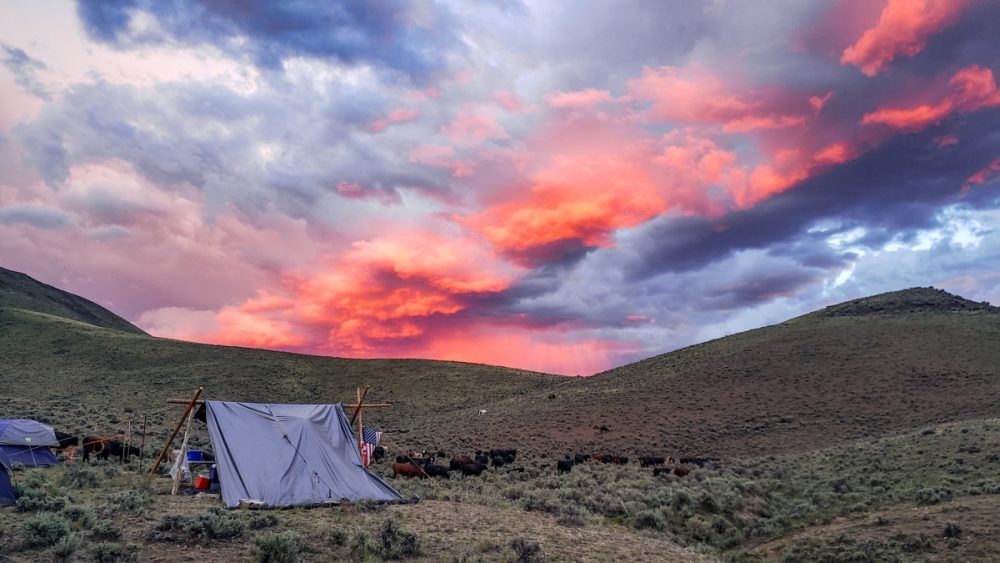


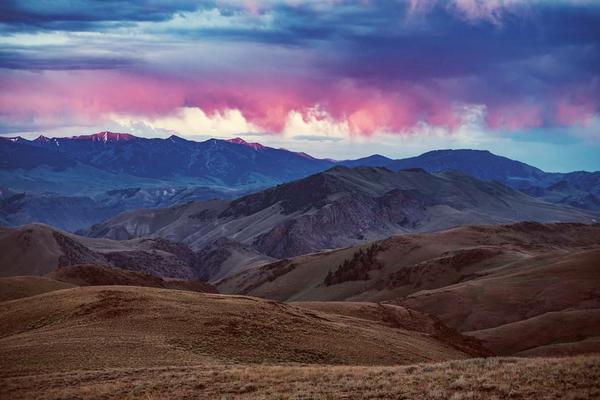
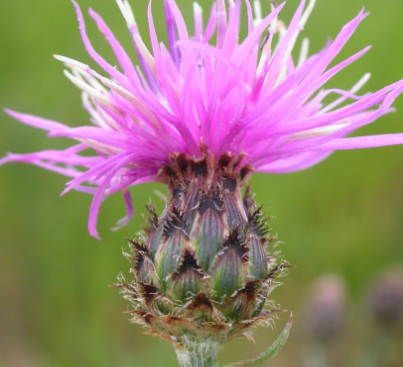

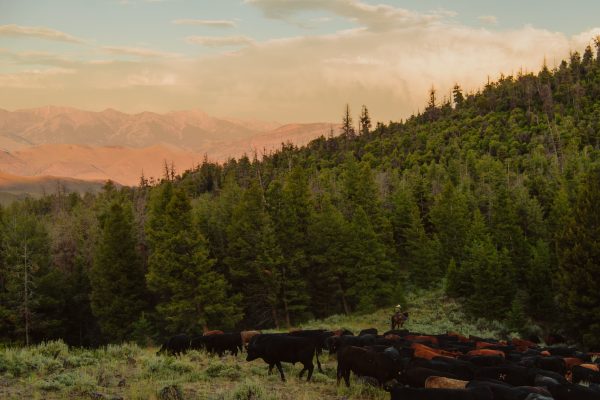
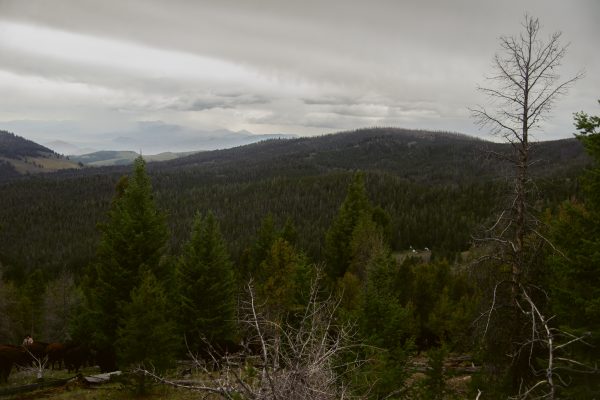
Leave a Reply